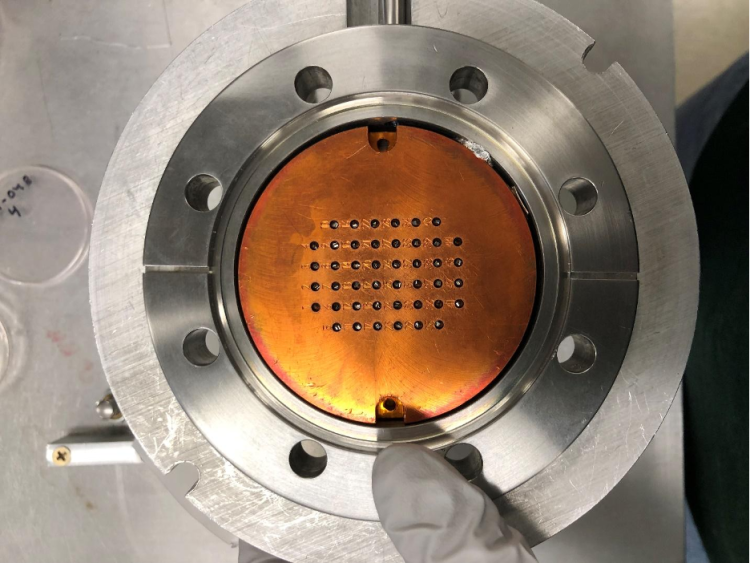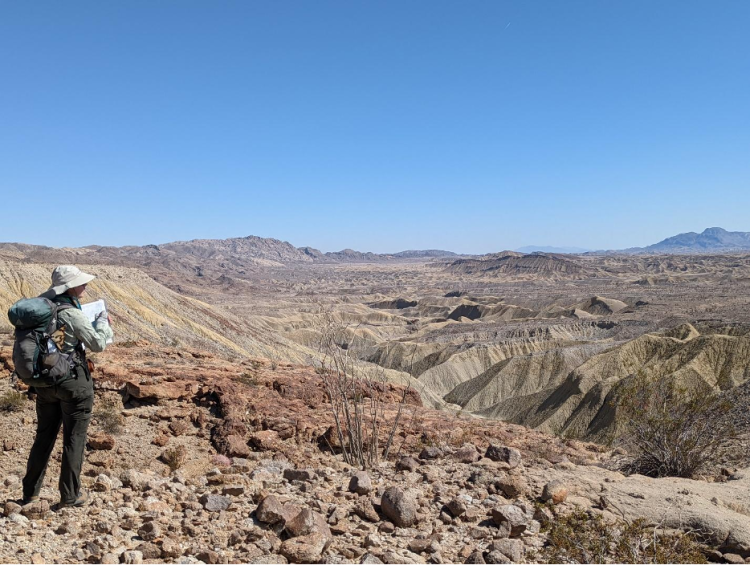Elaine Young - Project Profile
2020 AGeS awardee
What scientific question(s) does your research address and what motivates this work?
The Fish Creek Vallecito basin (FCVB), a subbasin of the Salton Trough, provides an unusually well-exposed sedimentary record of the late Cenozoic northern Gulf of California rift. I examined the structural, thermal, and subsidence record of this basin to elucidate the mechanical conditions of rifting under the influence of a high sedimentation rate within the Colorado River delta. At present, high heat flow and overpressure conditions due to rapid sedimentation are hypothesized to affect fault behavior within the Salton Trough by promoting fault creep and earthquake swarms. The FCVB exposes the upper 4 to 6 km of the crust and thus provides an opportunity to directly sample rocks from the upper seismogenic zone to quantify thermal history and to test whether overpressure conditions may have developed at depth. This project provided important structural and thermal context for the FCVB, allowing us to test models for overpressure development in the region.

Figure 1: Photo of my apatite grains being loaded into one of the helium lines for analysis at UT Austin. Gloved finger for scale.
What chronometric tool did you employ and why?
I used apatite (U-Th)/He (AHe) cooling ages to test between two structural models of basin subsidence. A pre-existing suite of zircon (U-Th)/He cooling ages from this basin have an exclusively detrital signal, meaning no reset ages. This meant that of the low temperature thermochronometers we could sample in this area, AHe was the most likely to have a post-deposition signal and/or reset ages. These cooling ages and thermal models allowed me to determine the depth of exposure, maximum temperature during burial, and timing of exhumation in the FCVB. I obtained AHe cooling ages from samples collected in both the basin strata and the basement rocks and in the hanging wall and the basement rocks in the footwall of the Vallecito fault. Our structural model for the FCVB predicts a low magnitude of subsidence, likely 2-4 km total. Because this basin had rapid deposition and was exhumed relatively quickly, the geothermal gradient was likely depressed and higher than expected for a rift basin. This makes seeing fully reset AHe ages for even our deepest samples unlikely.

Figure 2: Conducting geologic mapping in the FCVB to gain context for our dates and to plan sample collection.
What were some of the key takeaways of your research?
- No samples were fully reset, indicating that the base of the section was in the partial retention zone
- The spread in ages from our basal, single clast, locally sourced strata is consistent with the spread of ages found in the local basement source rocks, suggesting that there is some inheritance in our cooling ages.
- Thermal modeling with radiation damage accumulation suggests maximum temperatures were about 80-90°C. When combined with the burial depth of 2-4 km, this suggests a geothermal gradient of 20-30°C/km, which is lower than the modern Salton trough.
What new experiences, opportunities, and collaborations did you gain as an AGeS-Grad awardee?
I learned how to pick and pack apatite crystals for analysis and was able to visit the lab at UT Austin. I had prior experience with U-Pb, but not helium ages, so it was a great opportunity to learn about that process, see the equipment, and talk about the samples and the data with the researchers there.
What is one piece of advice you have for future AGeS-Grad award applicants or awardees?
Keep in regular contact with your lab and make sure to have a clear plan and timeline as early as possible, especially if you are working on a tight timeline to graduation. Having a clear plan early on allows you to more easily adjust as things come up and ensures that you and the lab are on the same page for the whole project.

